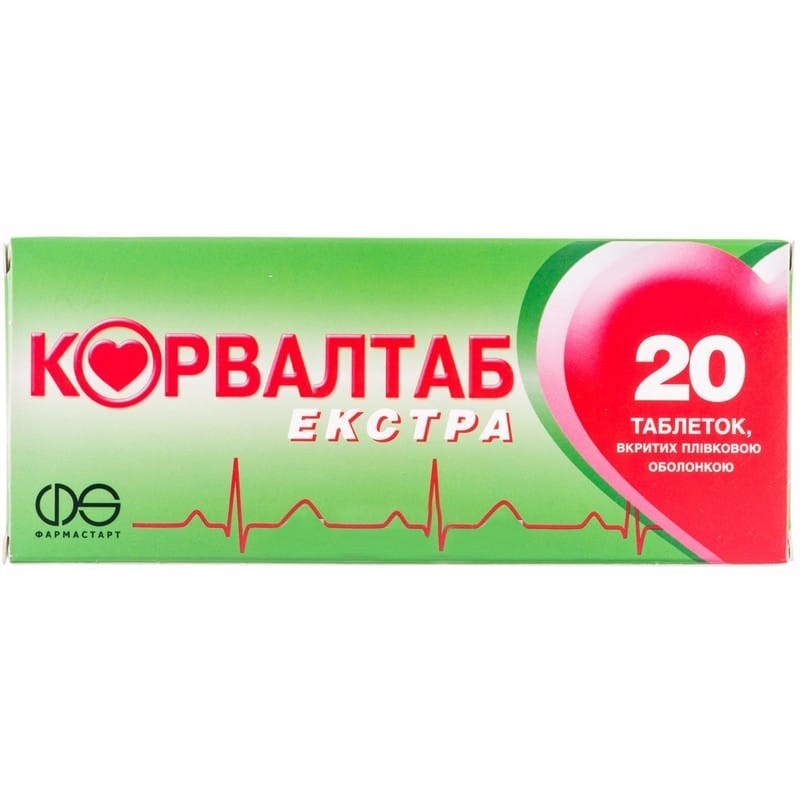



 Secure and encrypted payment processing
Secure and encrypted payment processing We ship to over 40 countries including the USA, UK, Europe, Australia and Japan
We ship to over 40 countries including the USA, UK, Europe, Australia and Japan Guaranteed refund or reship if you haven't received your order
Guaranteed refund or reship if you haven't received your ordervasodilator (coronarolytic), sedative, hypnotic. It has a mild antianginal effect. helps to reduce the excitability of central nervous system, has a calming effect and facilitates the onset of natural sleep.
Ethyl ester of α-bromisovalerianic acid, which is part of the drug, has an antispasmodic, coronarolytic and sedative effect; in high doses, it also causes a mild hypnotic effect.
Guaifenesin causes anxiolytic (anti-anxiety) action.
Doxylamine Hydrogen Succinate is a H Blocker1-receptors and exhibits sedative, hypnogenic and anti-allergic effects.
Pharmacokinetics Guaifenesin is rapidly (after 30 minutes) absorbed in the digestive tract. It penetrates mainly into tissues containing acidic mucopolysaccharides. After oral administration Cmax achieved after 1–2 hours, and therapeutic concentration persists for 6 hours. T½ guaifenesin is about 1 hour. It is excreted in sputum and excreted by the kidneys in the form of metabolites, as well as unchanged. WITHmax doxylamine hydrogen succinate in plasma is achieved after an average of 2 hours (Tmax) after taking the drug.
T½ doxylamine from plasma is an average of 10 hours
Doxylamine hydrogen succinate is partially metabolized in the liver by demethylation and N-acetylation. T½ may increase significantly in the elderly and in patients with renal or hepatic insufficiency. The various metabolites formed during the breakdown of the molecule are not quantitatively significant, since 60% of the dose is determined in the urine in the form of unchanged doxylamine.
Mildly pronounced spasms of the coronary vessels; neurocirculatory dystonia - in complex therapy; neurosis with increased irritability; increased irritability; mild form of insomnia; dermatosis, accompanied by itching.
The dosage and duration of the course of treatment is determined by the doctor individually for each patient. adults are usually prescribed 1 tablet 2-3 times a day before meals. with a mild form of insomnia, 1-2 tablets are prescribed 30 minutes before bedtime.
Hypersensitivity to the components of the drug or antihistamines. severe renal and hepatic impairment, hepatic porphyria. glaucoma in the patient’s history or in the family history. urethroprostatic disorders with a risk of urinary retention. severe heart failure. depression and other disorders accompanied by depression of the central nervous system.
In some cases, such side effects may occur:
from the nervous system: drowsiness, lightheadedness;
from the digestive tract: nausea, vomiting;
from the immune system: allergic reactions (including skin rash, itching, urticaria).
These phenomena are eliminated by reducing the dose or stopping the drug.
With prolonged use of the drug in high doses, the development of bromism is possible.
Diarrhea, constipation, dry mouth, disturbance of accommodation, severe palpitations.
Daytime drowsiness: with the development of such an effect, it is necessary to reduce the dose.
There are rare reports of the formation of calculi in the bladder or kidney in patients who have been taking guaifenesin in high doses for a long time.
In case of unwanted adverse reactions should consult a doctor.
While taking the drug, you must avoid drinking alcohol.
Use with caution in elderly patients because of the risk of dizziness.
During treatment, night apnea syndrome may worsen (an increase in the number and duration of respiratory arrest).
In some cases, a discoloration of urine is possible.
The drug should be used with caution in such categories of patients with:
Use during pregnancy and lactation. The drug is not prescribed during pregnancy and lactation.
Children. There is no experience with children, therefore, the drug is not used in pediatric practice.
The ability to influence the reaction rate when driving vehicles or working with other mechanisms. For the treatment period, one should refrain from driving or from working with other mechanisms that require the speed of psychomotor reactions.
With simultaneous use with other drugs that inhibit the central nervous system, a mutual enhancement of the action is possible, as well as an increase in the action of ethanol. the effect of the drug is enhanced by the intake of alcohol.
It should be borne in mind that in the case of a combination of the drug with:
Drowsiness, weakness, dizziness, vertigo, gastrointestinal disturbances and signs of anticholinergic effects are possible: agitation, dilated pupils, accommodation paralysis, dry mouth, redness of the face and neck, hyperthermia, sinus tachycardia. the use of the drug in very high doses can cause symptoms such as agitation, confusion, and respiratory depression.
Treatment: stopping the drug, gastric lavage and symptomatic therapy. There is no specific antidote.
In the original packaging at a temperature not exceeding 25 ° C.
ACIN-PIM-122016-005